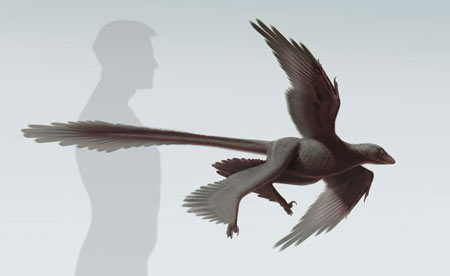Ancient flying reptile named after 'Avatar' creature
Updated: 2014-09-12 06:18
(Agencies)
WASHINGTON - Some of the most visually stunning sequences from director James Cameron's blockbuster movie "Avatar" involved graceful flying creatures that were ridden by blue human-like beings facing ecological destruction on a moon called Pandora.
|
Avatar's Cameron launches China joint venture Avatar director James Cameron, has launched a new venture in China, along with local partners. Cameron Pace Group has set up a division in the northern Chinese city of Tianjin and launched its first film project, a 3D documentary on the historical city of Beijing. China to produce its own 'Avatar' China is preparing to produce its own 3D fantasy movie based on romantic folklore, with aims to make it an epic on par with the U.S. blockbuster "Avatar." |
|
 |
It turns out that an animal very similar to those "Avatar" creatures, called Ikran, actually did exist here on Earth long ago.
Scientists on Thursday announced the discovery of fossils in China of a new species of flying reptile called a pterosaur that lived 120 millions years ago and so closely resembled the creatures from the 2009 film that they named it after them.
It is called Ikrandraci avatar, meaning "Ikran dragon" from "Avatar." And this pterosaur is noteworthy for more than just its resemblance to a movie creature.
The scientists said it appears that Ikrandraci avatar had a throat pouch similar to that of a pelican. It probably fed on small fish from freshwater lakes, flying low over the water and catching prey by skimming its lower jaw into the water, they said. It may have stored the fish in the pouch, they added.
This Cretaceous Period pterosaur boasted an unusual blade-like crest on its lower jaw like the one on the movie creatures.
"The head structure is similar in this pterosaur to the Ikran in 'Avatar,'" said one of the researchers, paleontologist Xiaolin Wang of the Institute of Vertebrate Paleontology and Paleoanthropology, Chinese Academy of Sciences in Beijing.
"Of course, nobody and nothing can ride this pterosaur," Wang added.
Another of the researchers, paleontologist Alexander Kellner of Brazil's National Museum at the Federal University of Rio de Janeiro, joked: "Please, (there were) no blue hominids during the Cretaceous."
Ikrandraci avatar, whose fossils were unearthed in China's Liaoning province, boasted a wingspan of about 8 feet (2.5 meters), Kellner said.
It did not have a crest on the top of its elongated head as many pterosaurs did. Behind the lower jaw crest was a hook-like structure that appears to have been the anchor point for the throat pouch, Kellner said. It had relatively small teeth good for snaring small fish.
It lived in a warm region teeming with life, with feathered dinosaurs, birds, mammals, frogs, turtles and other animals along with a variety of trees and other plants, Wang said.
The researchers studied fossils of two specimens of Ikrandraci avatar.
Pterosaurs were Earth's first flying vertebrates, with birds and bats making their appearances later. They thrived from about 220 million years ago to 65 million years ago, when they were wiped out by the asteroid that also doomed the dinosaurs.